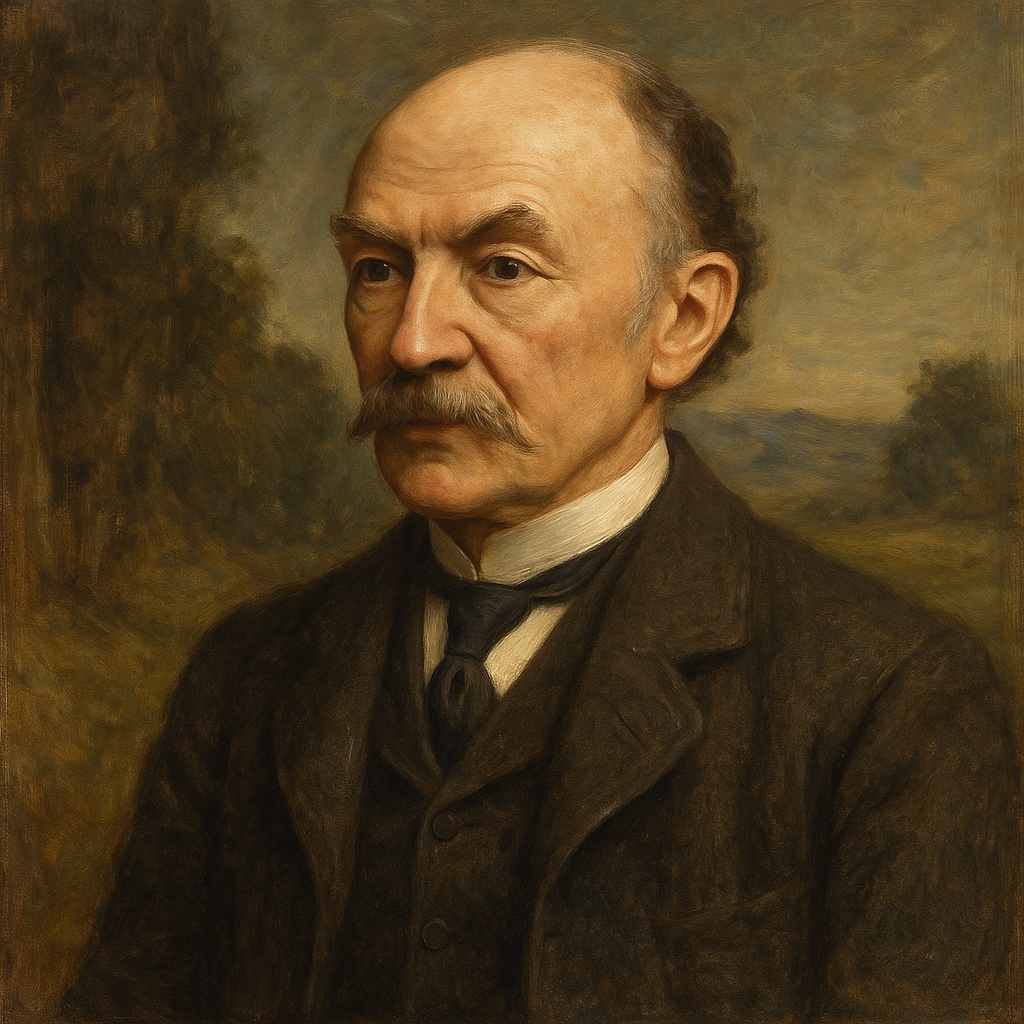The Voice
Thomas Hardy
1840 to 1928

Woman much missed, how you call to me, call to me,
Saying that now you are not as you were
When you had changed from the one who was all to me,
But as at first, when our day was fair.
Can it be you that I hear? Let me view you, then,
Standing as when I drew near to the town
Where you would wait for me: yes, as I knew you then,
Even to the original air-blue gown!
Or is it only the breeze, in its listlessness
Travelling across the wet mead to me here,
You being ever dissolved to wan wistlessness,
Heard no more again far or near?
Thus I; faltering forward,
Leaves around me falling,
Wind oozing thin through the thorn from norward,
And the woman calling.
Thomas Hardy's The Voice
Thomas Hardy's poem "The Voice" is a poignant exploration of grief, memory, and the lingering presence of a lost loved one. Written in 1912 following the death of his wife Emma, the poem captures the complex emotions of a man grappling with loss and the haunting echoes of the past. Through its intricate structure, evocative imagery, and nuanced use of sound, Hardy crafts a deeply moving meditation on the nature of remembrance and the power of the mind to resurrect the dead.
The poem is structured in four stanzas, each with four lines, followed by a final quatrain with shorter lines. This form mirrors the emotional journey of the speaker, with the first three stanzas maintaining a sense of regularity and control, while the final stanza breaks from this pattern, suggesting a fracturing of the speaker's composure as he confronts the reality of his loss.
Hardy employs a complex rhyme scheme (abab cdcd efef ghgh) throughout the first three stanzas, which contributes to the musical quality of the poem and echoes the "calling" voice that the speaker hears. This regularity in rhyme contrasts with the emotional turbulence expressed in the content, creating a tension that underscores the speaker's struggle to reconcile his memories with his present reality.
The opening line, "Woman much missed, how you call to me, call to me," immediately establishes the central theme of the poem: the persistent memory of a deceased loved one. The repetition of "call to me" emphasizes the intensity and persistence of this spectral voice, while also mimicking the echo-like quality of a distant call. This auditory imagery is a crucial element throughout the poem, as the speaker grapples with whether the voice he hears is real or imagined.
In the second stanza, Hardy introduces visual imagery to complement the auditory elements. The speaker yearns to "view" the woman, imagining her as she was in the past, "Standing as when I drew near to the town / Where you would wait for me." This vivid recollection, complete with the specific detail of the "original air-blue gown," demonstrates the power of memory to recreate the past in exquisite detail. However, this very specificity also heightens the sense of loss, as it underscores the impossibility of truly recapturing these moments.
The third stanza introduces doubt into the speaker's mind. He questions whether the voice he hears is merely "the breeze, in its listlessness / Travelling across the wet mead to me here." This shift from certainty to uncertainty reflects the complex nature of grief, where the bereaved may oscillate between feeling the presence of the deceased and confronting the finality of their absence. The phrase "dissolved to wan wistlessness" is particularly evocative, suggesting both the physical dissolution of the body and the fading of memory over time.
The final quatrain marks a significant departure from the established pattern, both in form and tone. The shorter lines and irregular rhyme scheme (ijkl) create a sense of fragmentation that mirrors the speaker's emotional state. The imagery becomes more immediate and sensory, with the speaker "faltering forward" amid falling leaves and a thin, oozing wind. This shift to the present tense and more concrete imagery grounds the poem in the speaker's current reality, even as the final line, "And the woman calling," reasserts the persistent memory of the lost loved one.
Hardy's use of alliteration and assonance throughout the poem contributes to its haunting, musical quality. The repetition of 'w' sounds in phrases like "woman much missed" and "wan wistlessness" creates a soft, wind-like effect that echoes the breeze mentioned in the poem. Similarly, the long 'o' sounds in "oozing" and "through" in the final stanza evoke a sense of hollowness and melancholy.
The poem's title, "The Voice," is significant in its ambiguity. It could refer to the voice of the deceased woman, the voice of memory, or even the poet's own voice as he grapples with his loss. This multiplicity of meanings enriches the poem, allowing for various interpretations of the nature of grief and remembrance.
In conclusion, "The Voice" is a masterful exploration of the complexities of loss and memory. Through its carefully crafted structure, vivid imagery, and nuanced use of sound, Hardy creates a deeply moving portrait of a man caught between past and present, memory and reality. The poem serves as a testament to the enduring power of love and the ways in which the dead continue to speak to us long after they are gone, challenging our understanding of the boundaries between life and death, presence and absence.
This text was generated by AI and is for reference only. Learn more
Want to join the discussion? Reopen or create a unique username to comment. No personal details required!



Comments
No comments yet. Be the first to comment!